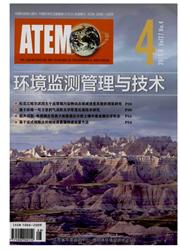

 中文摘要:
中文摘要:
2010年4月调查了钱塘江中游区域29个样点的水环境特征和底栖动物。聚类排序将样点分为参照、农业和城镇3组,相似性分析表明不同组间底栖动物群落有显著差异(r=0.863,P=0.001)。环境因子的主成分分析表明,研究区域主要的环境胁迫是农业和城镇用地及其引起的水质变化,并能较好解释组间物种差异的关键环境胁迫因子为农业用地比例、城镇用地比例、溶解氧、总氮和平均底质得分(Rho=0.568,P=0.001)。底栖动物参数(总分类单元数、Shannon-Weaver多样性指数、BI指数和丰富度指数)和k-优势度曲线显示农业和城镇组的生物完整性遭到很大程度的破坏,且农业组较城镇组严重。
 英文摘要:
英文摘要:
Water environmental variables and benthic macroinvertebrates of 29 stream sites were investigated in the middle section of Qiantang River Basin in April 2010.All sampling sites were plotted out reference,agriculture and urban groups by CLUSTER analysis,One-way ANOSIM showed a significant difference(r=0.863,P=0.001) between these three groups.Principal component ordination of environmental factors indicates the major stress is anthropogentic land use and the combined variations of water quality.The most important variables structuring macroinvertebrate assemblages were percentage of agricultural land use,percentage of urban,dissolved oxygen(DO),total nitrogen(TN) and the mean substrate score(Rho=0.568,P=0.001).Macroinvertebrate community structures and integrities were degraded and showed specific variation due to agricultural and urban land use based on macroinvertebrate metrics and k-dominance curves.Moreover,agricultural sites were in a slightly more modified ecological state than urban sites overall.
 同期刊论文项目
同期刊论文项目
 同项目期刊论文
同项目期刊论文
 期刊信息
期刊信息
